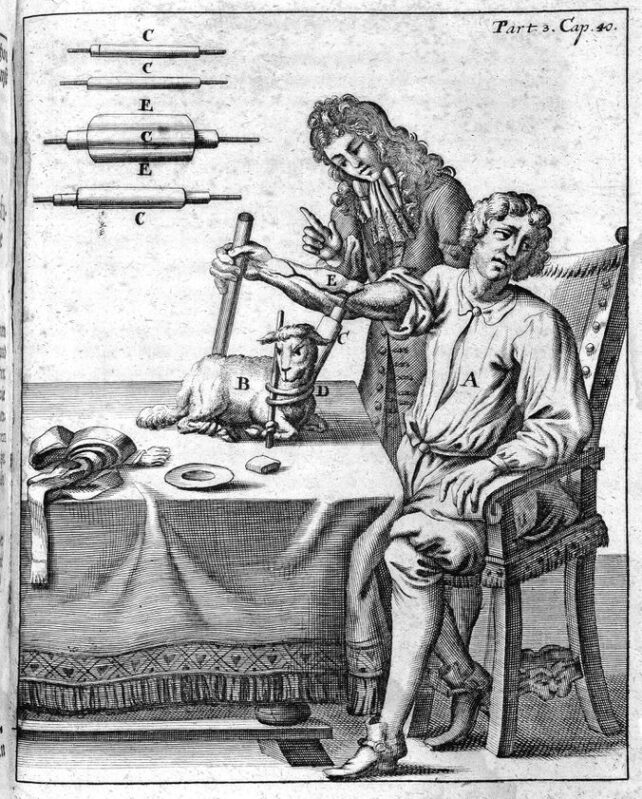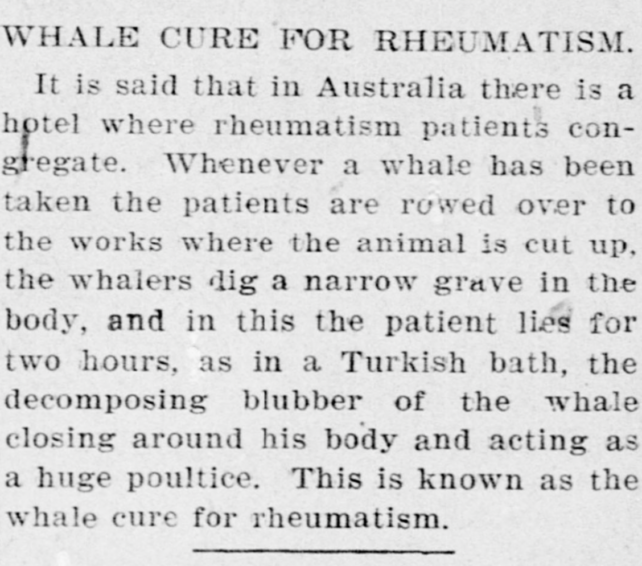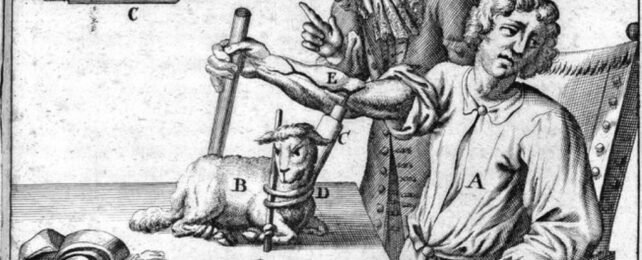Modern society has many perks, and one that our ancestors would have surely envied is our ability to visit a doctor and expect safe and effective treatment.
You don't have to look far back in history to suddenly appreciate how far medicine has come.
Here are five of the weirdest and wackiest medical treatments in human history.
A Jar of Farts
The Great Plague of London in the 1660s was a scary time. The public was willing to do just about anything to stay healthy, including sniffing a jar of their own farts.
Back then, doctors were apparently convinced that the plague was spread via deadly air vapor and that a foul-smelling substance could dilute the pollution.
As such, some locals apparently took to storing their farts in jars, just in case the situation suddenly demanded a quick whiff.
Milk Transfusions
Before blood groups were discovered, about half of all patients who received blood from a donor ended up dying.
In the late 1800s, it became popular for doctors to use milk instead.
The precious liquid, either from cows, goats, or humans, was thought to provide the body with the raw materials to create white blood cells in a safer way than replenishing them through donor blood.
In reality, however, milk transfusions still often resulted in death. It didn't take long for the idea to fall out of favor.

The Pow(d)er of Mummies
If you entered a European apothecary in the medieval period, there's a strong chance you'd have walked out with a bottle of powder containing a ground-up Egyptian mummy.
From the 12th century onward, mummy medicine was widespread in Europe and was used to treat bruises, headaches, wounds, cancer, gout, or depression.
Only in the 16th century did doctors begin to question the remedy. In all likelihood, the whole fad was a silly misunderstanding based on a mistranslation of ancient texts.
These texts argued that bitumen, often used in the mummification process, could heal wounds and broken limbs or provide an antidote to poisons.
It wasn't the mummy itself that was originally considered medicinal.
The Whale Hotel
One of the more recent and ridiculous medical crazes began at the very end of the nineteenth century at a hotel in Australia. Here, patients with rheumatoid arthritis were rowed out to a dead whale and instructed to lie down in its carcass for several hours.
The bizarre treatment was apparently 'discovered' by a drunk individual who stumbled upon a dead whale on the beach and, for some reason, "took a header into the decomposing blubber".
Not only did he emerge completely sober, he claimed to have been cured of his rheumatism.
It's unclear how long others followed in his footsteps.

Cabbage as a Cure-all
In ancient Rome, one vegetable was considered more healthy than almost any other.
According to the famous Roman scholar Pliny the Elder, "It would be too lengthy a task to enumerate all the praises of the cabbage."
Of all Piny's recommended uses, one of the most bizarre is the injection of warm cabbage juice into the ears to cure hearing loss.
The Roman historian Marcus Cato the Elder even wrote a 2,000-word treatise on the wonders of cabbage.
"It promotes digestion marvelously and is an excellent laxative, and the urine [of cabbage eaters] is wholesome for everything," Cato gushed.
In fact, Pliny once said that if little boys are bathed in this urine, they "never become weak".
Our ancestors sure were creative!
